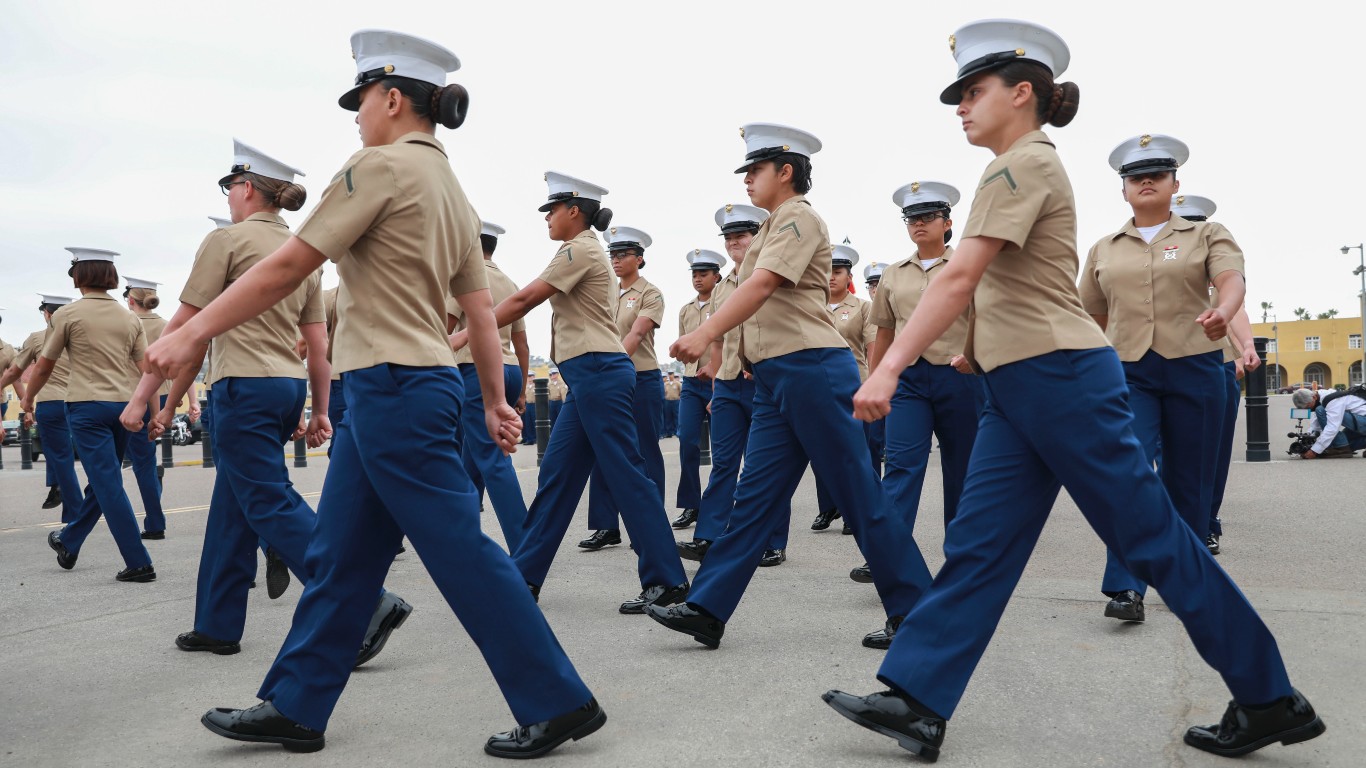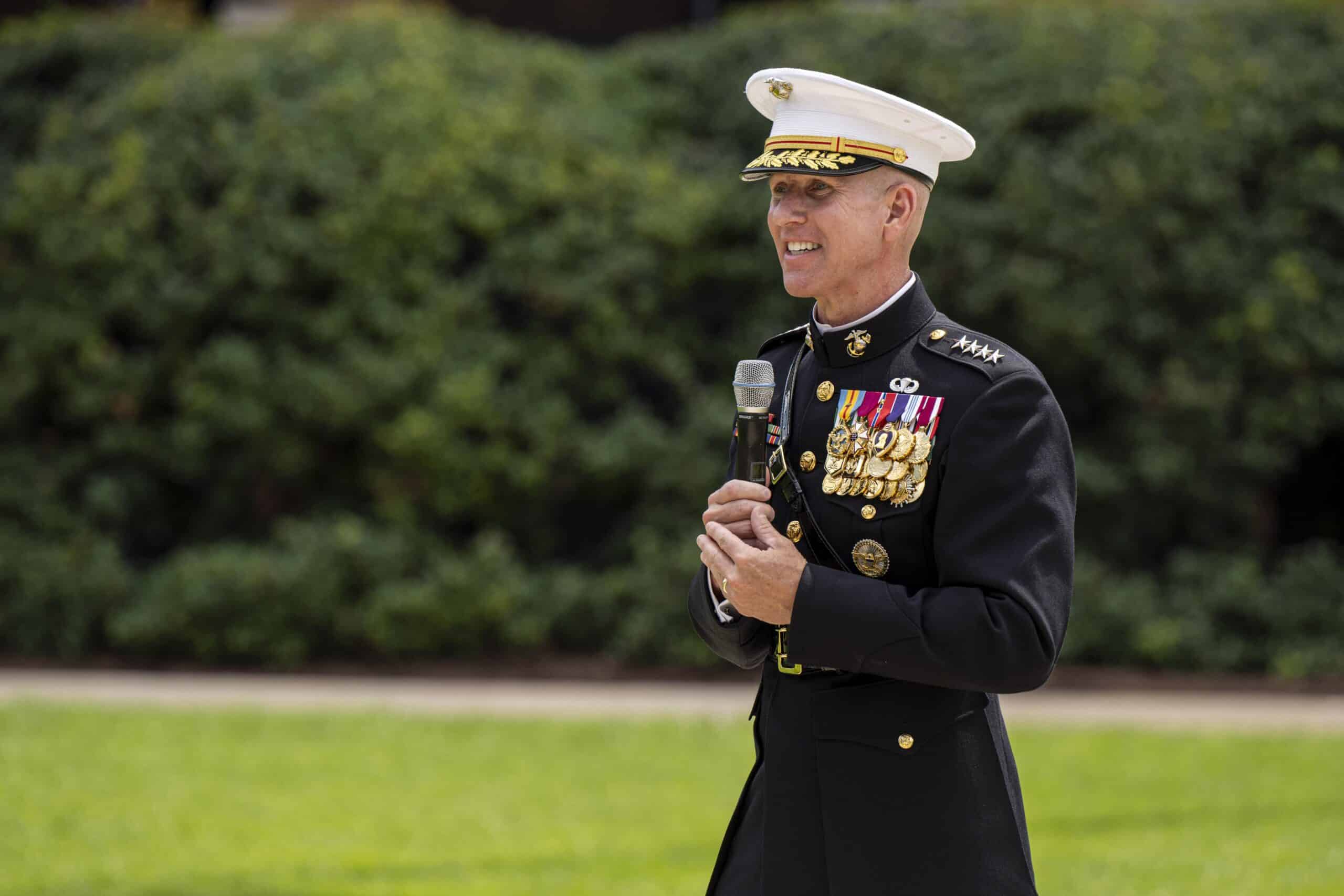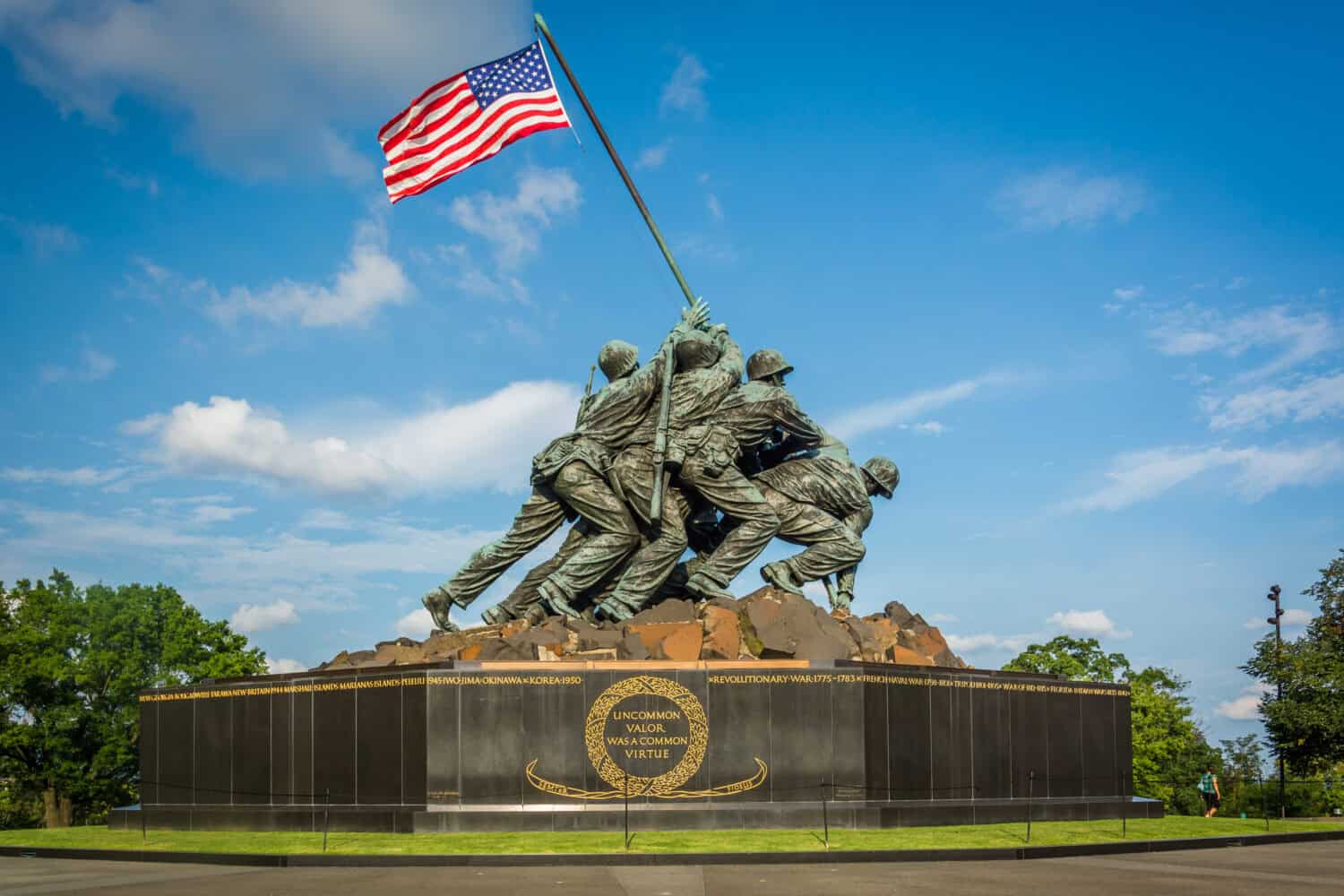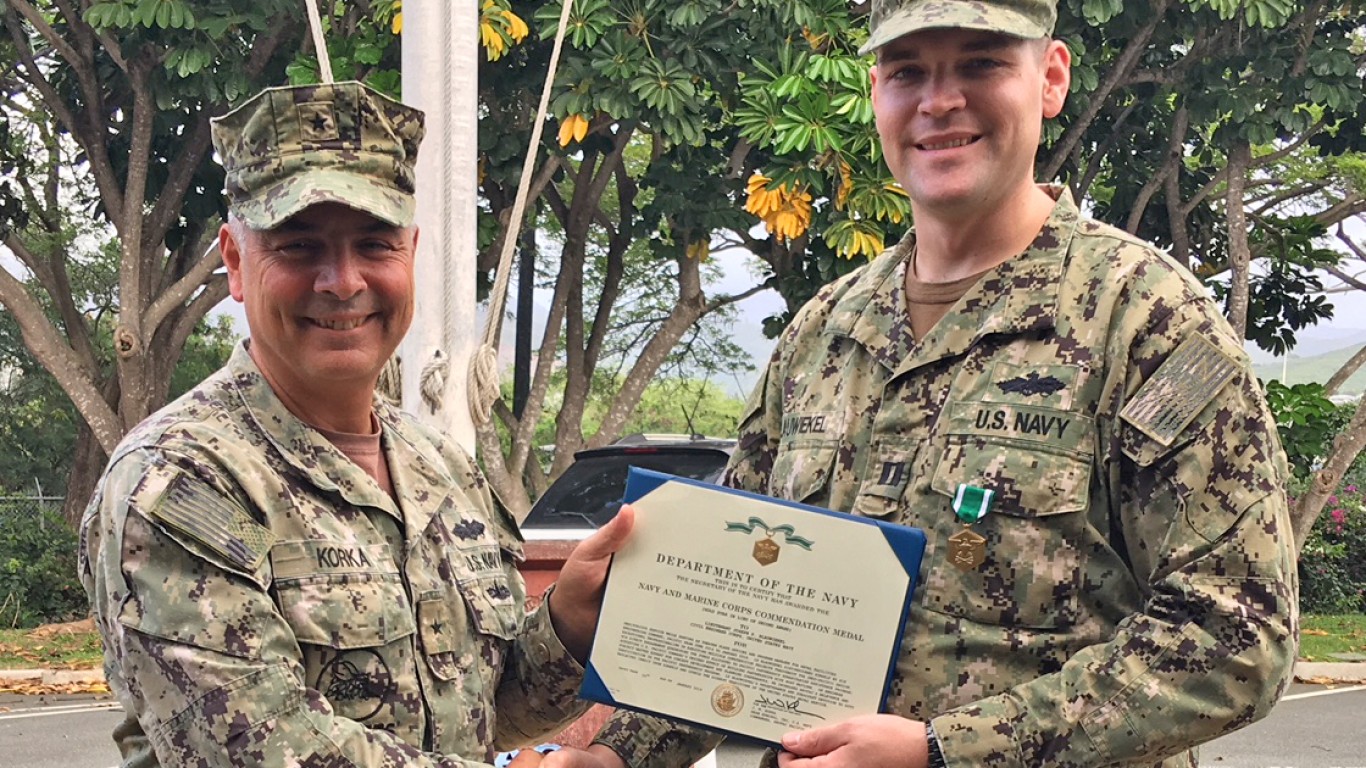Military
The Marines' Highest-Ranking Four-Star Generals Make Over 200K per Year

Published:

The U.S. Marine Corps was founded in a tavern in Philadelphia in 1775, and later joined forces with the Navy in 1834. This well-trained group played a crucial role in the 1942 Battle of Guadalcanal, using innovative strategies to support troops and defeat the Japanese.
The Marines are defined as the maritime land force of the U.S. Armed Forces. They are a highly skilled group responsible for serving aboard Navy ships and engaging in combat to defend crew and resources. These elite men and woman perform expeditionary missions and amphibious operations, maintaining their own artillery and aerial forces.
Despite lower trust in institutions among Gen Z young adults, it seems that serving as a Marine has not lost its luster. And some would say that it’s not even about the pay. According to Sandboxx, “the Marine Corps has never been heavy on bonuses,” and Gen. Eric Smith, the assistant commandant of the Marine Corps, says: “Your bonus is that you get to call yourself a Marine.” But how much do Marines get paid?
To find every rank in the Marine Corps, and what they’re paid, 24/7 Wall St. reviewed 2024 basic pay tables from the Defense Finance and Accounting Service for the Department of Defense as well as Marine Corps ranks from the DOD and the Marine Corps site. These ranks were matched with pay grades and are ordered by the maximum possible annual base pay (we used monthly pay to calculate annual pay).
Like all U.S. military personnel, Marines are paid a minimum basic pay based on rank and years of service. The Department of Defense budget increased that pay by 5.2% in 2024 — the highest increase of the past two decades. In addition, all military members also receive basic allowance for subsistence, which amounts to about $3,803 a year for officers and $5,523 a year for enlisted personnel.
Lower-ranking Marines are paid $24,000 to $32,000 a year (base pay). Promotion — and the higher pay that comes with it — beyond the rank of lance corporal is primarily based upon time in service, but such promotions are competitive. Each year, Congress states the percentage of Marines who can serve in each grade above Corporal.
Officers also rise up the ranks. The highest ranking, one-star generals and above, have a base pay beginning at over $150,000 a year. Generals who have 20 years of experience or more and vast amounts of personnel under their command can make over $220,000 a year in basic pay. For comparison, the average CEO pay is $258,900, according to the Bureau of Labor Statistics.

Despite the assertions that being a Marine is its own reward, without proper financial security the Marine Corps would struggle to recruit. In addition to basic bay, all Marines are entitled to a housing allowance. They can also apply for reenlistment bonuses, are eligible for special duty pay and allowances, and earn retirement benefits. If you’re interested in joining the Marines, check out the basic pay for each rank.

Marine Corps Privates are new to the service and usually engaged in some kind of training, including basic training, where they are immersed in military culture and are taught core skills required for their service.
Privates First Class are still new to the Corps and are focused on developing their skills and core values.

Much like Privates, Marine Corps Lance Corporals are usually either in some kind of training (including more specialized training) or on their initial assignment.

Considered experienced Marines facing numerous challenges, both physical and mental, Corporals are considered noncommissioned officers (NCO).

A Marine Corps Sergeant, also known as an NCO, is the first rank that can serve as drill instructors in charge of a recruit training platoon.

Marine Officers hold a college degree and have earned a commission. A Second Lieutenant, the lowest-ranking commissioned officer, leads at the platoon or company level. Those who have at least four years of experience as enlisted or warrant officers have higher pay to acknowledge their greater experience.

Marine Staff NCOs are highly experienced Marines, responsible for the Marines in their charge. Staff Sergeants make sure the Marines under them are trained and skilled. They are also responsible for administrative work.

Much like a Second Lt., a Marine Corps First Lieutenant has leadership roles but with increased responsibility. Also similar is the O-2E pay grade for those who previously served at least four years as enlisted or warrant officers.

Warrant officers in the Marines are officer-level technical specialists in their respective fields. To advance to this rank, the secretary of the Navy approves a warrant for a sergeant or staff NCO to be appointed to warrant officer.

Marine Corps Gunnery Sergeants serve as their unit’s operations chief, working on training, operations, and tactical advising with superior officers.

Marine Corps warrant officers are technical specialists in their respective fields, helping train and lead in that area. They become commissioned officers when achieving the rank of Chief Warrant Officer 2.

A Marine Corps Master Sergeant has a minimum required eight years of service. Similar to warrant officers, Master Sergeants are specialists in their military occupational specialty (MOS) and provide technical leadership.

A Marine Corps First Sergeant has a minimum required eight years of service. As the senior enlisted Marine in their company, they serve as senior enlisted advisors assisting the commanding officer. They help with discipline, administration, morale, and welfare matters.

A Captain is responsible for commanding an entire company of Marines, leading tactical operations with the support of lower-ranking commissioned officers and senior enlisted ranks.

Marine Corps warrant officers are technical specialists in their respective fields, helping train and lead in that area. They become commissioned officers when achieving the rank of Chief Warrant Officer 2.
A Marine Corps Major normally serves in roles such as battalion executive officers, weapons company commanders, or regimental or brigade staff members. O-4 to O-6 are called field grade officers.

Marine Corps warrant officers are technical specialists in their respective fields, helping train and lead in that area. They become commissioned officers when achieving the rank of Chief Warrant Officer 2.
A Marine Corps Master Gunnery Sergeant has a minimum required 10 years of service. These Marines are specialists in their field, helping provide technical leadership.

A Marine Corps Sergeant Major has a minimum 10 years of service. At the highest enlisted rank, they serve as advisors for a senior Marine commander, making high level strategic decisions.

The Sergeant Major of the Marine Corps has a minimum required 10 years. The senior enlisted Marine of the entire Corps is personally selected by the Commandant.
A Marine Corps Lieutenant Colonel, a field grade officer, is a key decision-maker and may serve as a battalion commander.

A Marine Corps Chief Warrant Officer five has a minimum required 20 years and is the highest-ranking warrant officer.

A Marine Corps Colonel, the highest-ranking field grade officer, can serve as a regimental commander, brigade executive officer, or division staff member.
First among general officers, a Marine Corps Brigadier General — a one-star general — is nominated by the president and must be confirmed for duty by the Senate.

A two-star general, a Marine Corps Major General, is also nominated by the president and must be confirmed for duty by the Senate.

A three-star general, a Marine Corps Lieutenant General has to have at least 20 years of service before he or she can be nominated by the president for the role.
Four-star Generals also must have at least 20 years of service before being nominated for their role.
The Assistant Commandant of the Marine Corps, a four-star general, is the second-highest ranking Marine officer and serves as deputy for the Commandant.
The highest-ranking four-star general and Marine officer, the Commandant of the Marine Corps serves on the Joint Chiefs of Staff.
Start by taking a quick retirement quiz from SmartAsset that will match you with up to 3 financial advisors that serve your area and beyond in 5 minutes, or less.
Each advisor has been vetted by SmartAsset and is held to a fiduciary standard to act in your best interests.
Here’s how it works:
1. Answer SmartAsset advisor match quiz
2. Review your pre-screened matches at your leisure. Check out the advisors’ profiles.
3. Speak with advisors at no cost to you. Have an introductory call on the phone or introduction in person and choose whom to work with in the future
Get started right here.
Thank you for reading! Have some feedback for us?
Contact the 24/7 Wall St. editorial team.